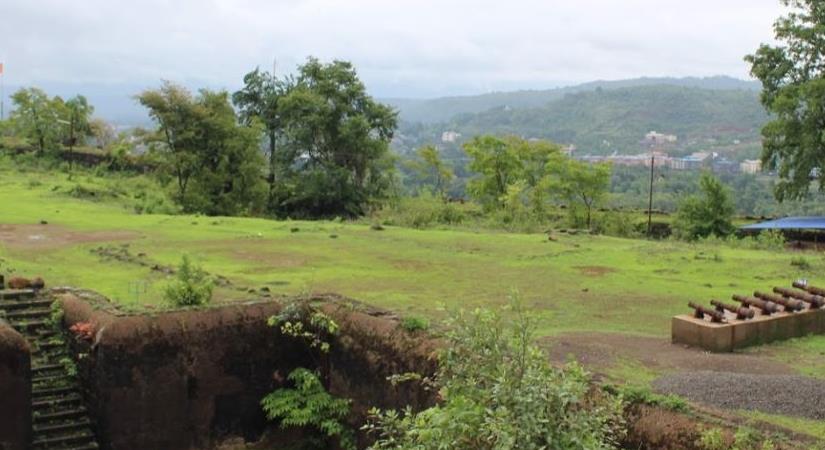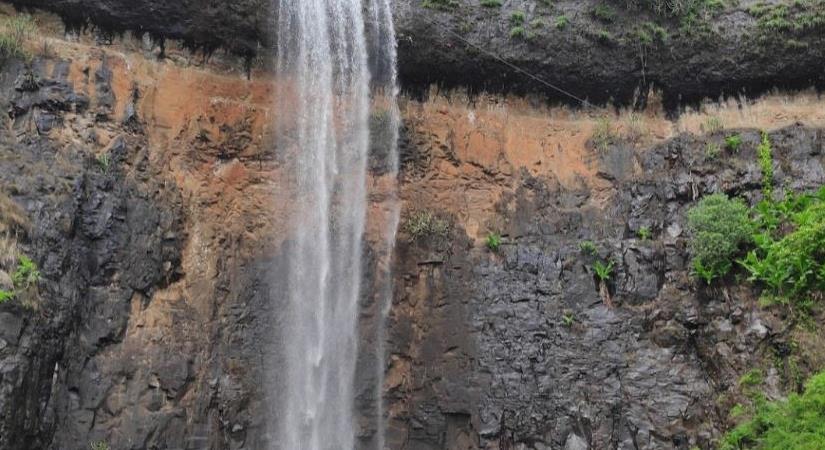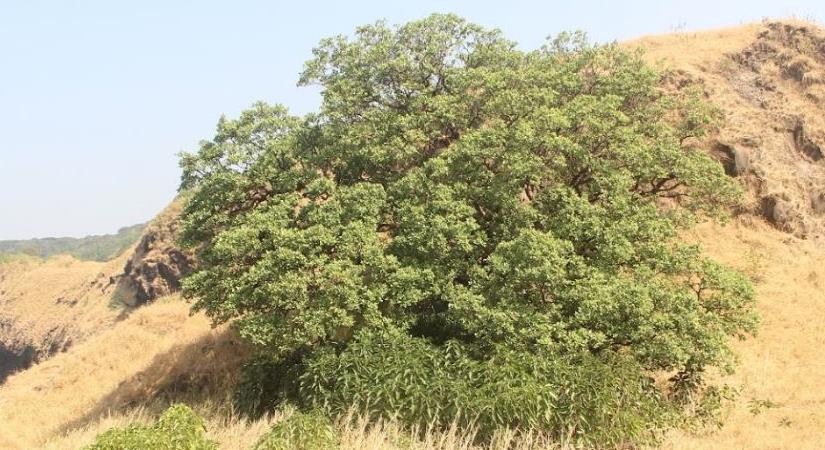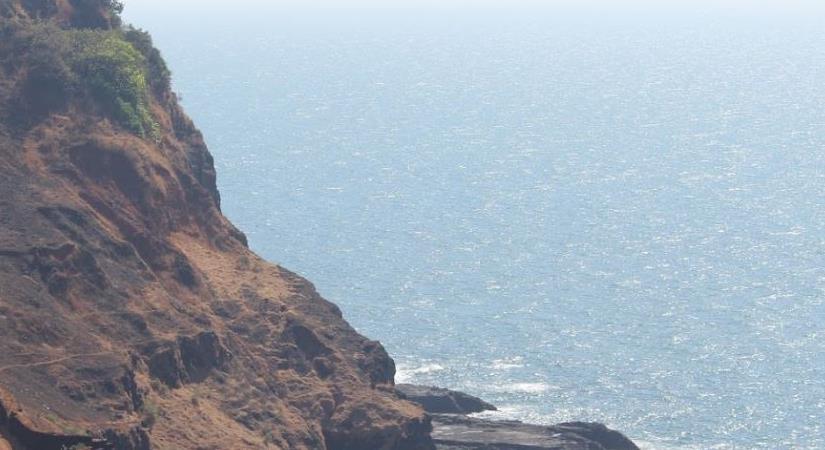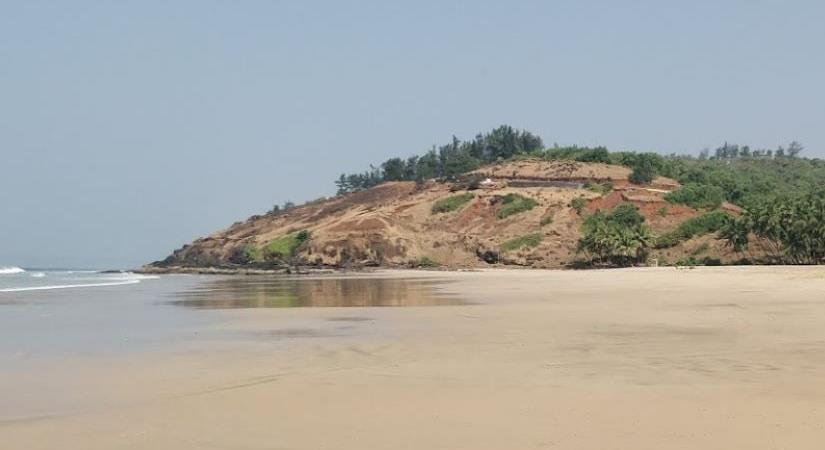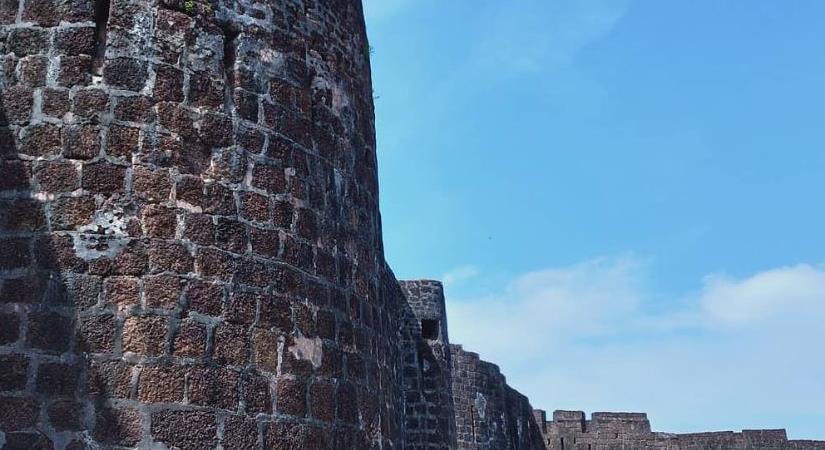Tathavade or Santoshgad Fort, is a triangular-shaped hill fort located in the north-west corner of the Phaltan taluka, approximately 12 miles south-west of Phaltan. This fort is a great place to explore if you’re a history buff or just love to trek.
According to local tradition, this fort was built by none other than Shivaji the Great (1630-80), but in 1666, it was in the hands of Bajaji Naik Nimbalkar. In the same year, Chhatrapati Shivaji served under Jaysing, the Rajput general of Aurangzeb’s army, against Bijapur and with his Mavlas escaladed Tathavade.
The Sahyadri range is divided into three parts from Pratapgad, and the forts of Santoshgad, Warugad, Mahimangad, and Vardhangad are located on this hill range. All these areas have low rainfall but are still prosperous due to sugarcane cultivation. Don’t worry about roughing it too much, as modern facilities like electricity and telephone are available at all places.
Today, the gate of the fort remains only nominal, but the guard houses in the doorway are still in good condition. After entering through the door, Hanuman’s tank is right in front, and behind him are the remains of palaces and houses.
The walls of the barns are standing, but the roof is blown off. There is a big pit behind it that looks like a well from a distance, but when you get closer, you realize that there is a water tank below, and steps have been made by cutting a hole in the wall to get down into the tank. How creative!
The protective ramparts and bastions of the first phase of the fort are still standing in good condition, which is a rare sight for many forts nowadays. Two hours are enough to wander the entire area of the fort, and from the fort, you can watch over the faraway region. Molghat is visible in the west.
To reach Tathavade, you can go from both Phaltan and Satara. Tathwade is a village at the base of the fort, and it can be reached in several ways. The State transport service from Phaltan to Tathwade is available every half hour, and it takes approximately 19 km. From Satara, you can take a bus going to Phaltan via Pusegaon Molghat to alight at Tathwade, and it takes approximately 23 km.
Once you reach Tathwade village, there is a restored temple of ‘Balasiddha’ that will give you an idea of when the fort was restored in the year 1762. From the steps of the temple, you can see that the fort is divided into three parts. The first phase consists of the defensive ramparts, and the second phase consists of the machi area and the uppermost part of the fort.
There is also a monastery to checkout on the way to the fort.
So, if you want to spend time and love to explore, there are numerous spots !
The Bijapur Government again apparently got it back from the Moghals probably by treaty. Chhatrapati Shivaji retook it for himself in 1673 [Grant Duffs Marathas, Vol. I, 202.] And in 1676 he had to retake the open country in its neighborhood, the estate-holders of which were always ready to rebel against him.[ Grant Duffs Marathas, Vol. I, 209.]
The fort was taken by the Moghals in 1689. [Grant Duffs Marathas, Vol. I, 273.]. But was ceded to Shahu in 1720 in the imperial grants made to him in that year. [Grant Duffs Marathas, Vol. I, 339] in a revenue statement of about 1790 Tathora appears as the head of a sub-division in the Nahisdurg sarkar with revenue of Rs. 1,120. [Warring’s Marathas, 244.] The fort remained in the hands of the Marathas till 1818 when it was shelled by a detachment of General Pritzler’s army from the plateau and a spur pointed out about half a mile to the west. A good many of the buildings and part of the walls are said to have been injured by the shelling. The commandant fled at the first few shots, the garrison followed, and the fort was taken. Its elaborate design and considerable strength for the times in which it was built may be explained by the fact that it was close to the Nizam Shahi frontier and of some importance therefore to the Bijapur government, while the constant disturbances in the neighborhood in Chhatrapati Shivajis time would amply account for any additions he made to it.
A story is told that the famous dacoit Umaji Naik (1827) was resting at a spring in the ravine which leads down to the fort from the plateau and that a Brahman on his way to Tathavad passed by with a little grain given him in charity. Umaji called on him to stand and give up what he had. But when he learnt that it was only grain sent him off in peace, entreated his blessings, and gave him Rs. 25 Before visiting to Santoshgad, I visited a place called Nimbhalkar wada in Wathar, a similar pace like Shaniwar wada in Pune and then we moved towards Santoshgad. Santoshgad is around 120kms from Pune. The fort is easy to climb. It takes less than 45 mins to climb the fort. Route to climb the fort is easy and there are no difficult patches in between. This fort can be done in one day.
